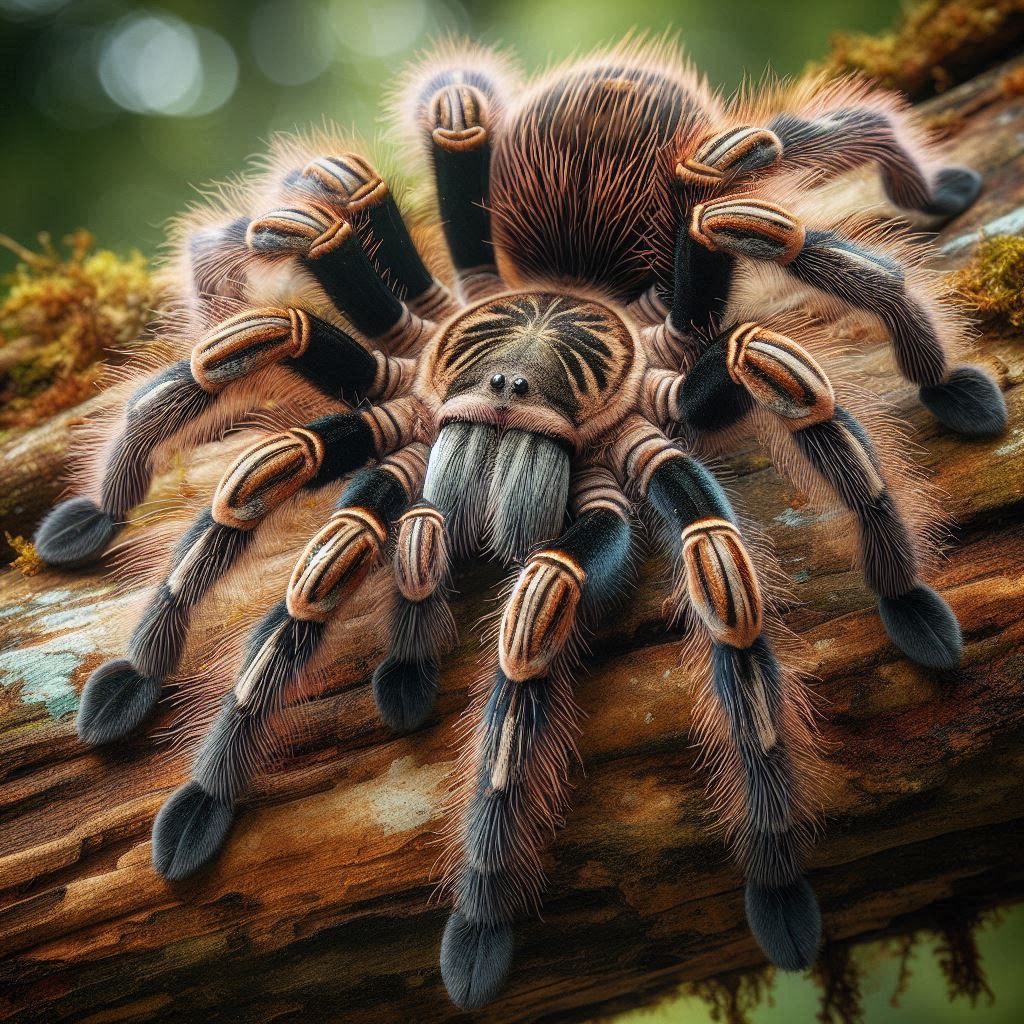Table of Contents
Table of Contents
- Introduction
- What You Will Learn
- Importance of Tarantulas
- Understanding Tarantulas
- What Are Tarantulas?
- Why Are Tarantulas Important?
- UK’s biggest tarantula: Meet the Goliath Birdeater
- Who Is the Goliath Birdeater?
- Habitat and Distribution
- Behavior and Lifestyle
- Caring for a Goliath Birdeater in the UK
- Comparing the Goliath Birdeater to Other UK Tarantulas
- Size Comparison
- Temperament and Care Needs
- Table of Information about UK’s biggest tarantula
- Tarantula Myths and Facts
- Myth: All Tarantulas Are Dangerous to Humans
- Myth: Tarantulas Are Aggressive
- Myth: Tarantulas Can Kill Birds Regularly
- Caring for Tarantulas: Tips for Enthusiasts
- Setting Up the Perfect Enclosure
- Feeding Your Tarantula
- Handling Tarantulas
- Common Health Issues in Tarantulas
- Molting Problems
- Parasites and Mites
- Conclusion
- Summary of Key Points
- The Fascination of Tarantulas
- FAQs about UK’s biggest Tarantula
Introduction
Have you ever wondered about the biggest tarantula in the UK? These eight-legged creatures, often misunderstood and sometimes feared, are fascinating members of the animal kingdom. In this article, we will delve into the world of tarantulas and uncover which species holds the title of the UK’s biggest tarantula. Our exploration will not only satisfy your curiosity but also provide valuable insights into the life and characteristics of these incredible spiders. Whether you are a budding arachnologist or just someone with a keen interest in nature, this article is tailored to be informative and engaging. Let’s dive into the world of these remarkable creatures and find out which one is the king of the tarantulas in the UK!

Understanding Tarantulas
What Are Tarantulas?
Tarantulas are large, hairy spiders belonging to the Theraphosidae family. They are known for their impressive size and often have a fearsome reputation. However, despite their appearance, tarantulas are generally harmless to humans.
- Key Characteristics: They have a robust body, covered in bristles, and possess eight legs.
- Habitat: Tarantulas are found in various parts of the world, including deserts, rainforests, and grasslands.
- Diet: Their diet mainly consists of insects, small animals, and occasionally birds.
Why Are Tarantulas Important?
Tarantulas play a crucial role in the ecosystem. They help control the insect population and serve as a food source for other animals. Understanding these creatures helps us appreciate the balance of nature.
UK’s biggest Tarantula: Meet the Goliath Birdeater
Who Is the Goliath Birdeater?
The Goliath Birdeater (Theraphosa blondi) is renowned as the largest tarantula species in the world. Although it is native to South America, enthusiasts in the UK keep it as a pet, making it the largest tarantula in the UK by size.
- Size: This tarantula can grow up to 11 inches in leg span, roughly the size of a dinner plate!
- Weight: It can weigh more than 6 ounces, making it the heaviest tarantula species.
Habitat and Distribution
The Goliath Birdeater is found in the rainforests of northern South America, particularly in countries like Brazil, Venezuela, and Guyana. In the UK, these tarantulas are typically kept in controlled environments, such as terrariums, by enthusiasts and pet owners.
Behavior and Lifestyle
Goliath Birdeaters are primarily nocturnal, meaning they are most active at night. They are ground dwellers and often create burrows to live in. Despite their name, they rarely eat birds; their diet mainly includes insects, frogs, and small rodents.
- Interesting Fact: The name “birdeater” comes from an early 18th-century engraving showing one eating a hummingbird.
Caring for a Goliath Birdeater in the UK
For those interested in keeping a Goliath Birdeater as a pet, it’s important to understand their specific needs.
- Enclosure: A large, secure terrarium with plenty of space for burrowing.
- Diet: They require a diet rich in protein, including insects and occasional small vertebrates.
- Temperature and Humidity: Maintaining appropriate humidity and temperature is crucial for their well-being.
Comparing the Goliath Birdeater to Other UK Tarantulas
Size Comparison
While the Goliath Birdeater holds the title for the largest tarantula in the UK, other notable species are also impressive in size.
- Chilean Rose Tarantula: Another popular pet tarantula in the UK, known for its docile nature. It typically grows up to 5 inches in leg span.
- Brazilian Black Tarantula: Known for its striking black color and calm demeanor, it can reach a leg span of 6-7 inches.
Temperament and Care Needs
Compared to other tarantulas kept in the UK, the Goliath Birdeater is more challenging due to its size and specific environmental needs.
- Chilean Rose: Easier to care for, with less demanding humidity and temperature requirements.
- Brazilian Black: Also easier to manage, with a calm temperament making it suitable for beginners.
Table of Information about UK’s biggest tarantula
| Tarantula Species | Origin | Average Size | Diet | Habitat Requirements |
|---|---|---|---|---|
| Goliath Birdeater | South America | Up to 11 inches | Insects, small animals | High humidity, warm temps |
| Chilean Rose | Chile | Up to 5 inches | Insects | Moderate humidity, warm |
| Brazilian Black | Brazil | Up to 7 inches | Insects | Moderate humidity, warm |
Tarantula Myths and Facts
Myth: All Tarantulas Are Dangerous to Humans
Fact: Most tarantulas, including the Goliath Birdeater, are not dangerous to humans. Their venom is not strong enough to cause serious harm.
Myth: Tarantulas Are Aggressive
Fact: While they may appear intimidating, tarantulas are generally not aggressive and prefer to avoid confrontation.
Myth: Tarantulas Can Kill Birds Regularly
Fact: Despite their name, Goliath Birdeaters rarely eat birds. Their diet mainly consists of insects and small animals.
Caring for Tarantulas: Tips for Enthusiasts
Setting Up the Perfect Enclosure
Creating a suitable home for your tarantula is essential for its health and well-being.
- Size: Ensure the enclosure is large enough for the tarantula to move freely.
- Substrate: Use a deep layer of substrate for burrowing species like the Goliath Birdeater.
- Temperature and Humidity: Maintain appropriate levels to mimic their natural habitat.
Feeding Your Tarantula
Feeding a tarantula is relatively straightforward but requires consistency.
- Diet: Provide a diet of live insects such as crickets or mealworms. Occasionally, you can offer larger prey like mice for species like the Goliath Birdeater.
- Frequency: Feed your tarantula once or twice a week, depending on its size and age.
Handling Tarantulas
While some tarantulas can be handled, it is generally not recommended due to the risk of injury to the spider.
- Gentle Touch: If you need to handle your tarantula, do so gently and only when necessary.
- Minimize Stress: Handling can be stressful for tarantulas, so it’s best to keep it to a minimum.
Common Health Issues in Tarantulas
Molting Problems
Tarantulas shed their exoskeletons in a process known as molting. This is a critical time for them, and problems can arise.
- Signs of Trouble: Difficulty shedding, lethargy, and loss of appetite.
- Prevention: Ensure the tarantula has a humid environment to aid in the molting process.
Parasites and Mites
Tarantulas can be susceptible to parasites and mites, which can cause health issues.
- Signs: Visible mites on the tarantula’s body, unusual behavior, and lethargy.
- Treatment: Isolate the affected tarantula and clean its enclosure thoroughly.
Conclusion
The Goliath Birdeater stands out as the largest tarantula in the UK, captivating enthusiasts with its impressive size and unique characteristics. Whether you’re fascinated by their intricate behaviors or considering one as a pet, tarantulas offer a glimpse into the incredible diversity of the natural world. By understanding these remarkable creatures, we can appreciate their role in the ecosystem and the importance of their conservation. From the depths of the South American rainforests to the terrariums of UK enthusiasts, the Goliath Birdeater continues to inspire awe and curiosity. So, the next time you encounter a tarantula, remember that these gentle giants are more than just creepy crawlies; they are vital members of our planet’s rich tapestry of life.
FAQs about UK’s biggest Tarantula
1. What is the largest tarantula in the UK?
The Goliath Birdeater is the largest tarantula in the UK, known for its impressive size and weight.
2. How big can the Goliath Birdeater get?
The Goliath Birdeater can grow up to 11 inches in leg span and weigh over 6 ounces, making it the heaviest tarantula species.
3. Are tarantulas dangerous to humans?
Most tarantulas, including the Goliath Birdeater, are not dangerous to humans. Their venom is not strong enough to cause serious harm.
4. What do Goliath Birdeaters eat?
Goliath Birdeaters mainly eat insects, small animals, and occasionally birds in their natural habitat.
5. Can you keep a Goliath Birdeater as a pet?
Yes, Goliath Birdeaters can be kept as pets, but they require specific care, including a large enclosure, proper diet, and suitable temperature and humidity levels.

